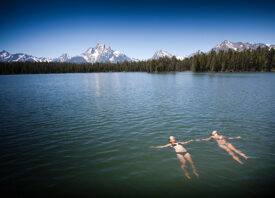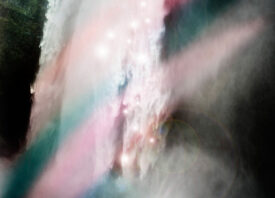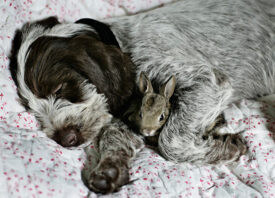Search this site
Exclusive Interview with ‘The Cut’ Photo Editor Emily Shornick About Online Editing and Her Quirky Collection of Offset Imagery

© The Licensing Project / Offset

© The Licensing Project / Offset
The Cut is a division of New York Magazine devoted entirely to female-driven content, covering everything from breaking fashion news to complex explorations of contemporary women’s issues. In addition to keeping its millions of readers appraised of the latest celebrity gossip and most engaging political debates, The Cut has helped define the voice of the Millennial Generation, generating viral content that speaks to a diverse group of 20-something women. The Cut seamlessly merges the sex and relationship advice of Cosmopolitan, the fashion of Vogue, and the stimulating content of Ms. Magazine, securing its position as a leading daily resource for women.
In addition to the website, a 6-page spread from The Cut also appears in every print issue of New York Magazine. As Photo Editor at The Cut, Emily Shornick is responsible for finding imagery that pops both online and off, photos that command attention and consideration amidst a plethora of internet content. Whether the subject of an article be feminism or the runway, Shornick finds the perfect image. For our latest Offset group show, Shornick shares some images that suit the original aesthetic of The Cut. We talk with her about fashion, photography, and what separates The Cut from other websites.
How would you describe the aesthetic of The Cut?
“The Cut’s aesthetic is bright and graphic. We err on the side of higher contrast and saturation. There is a lot of handheld flash going on. It’s bold, energetic, and almost demanding. It’s like candy that’s so sweet that it’s a little sour. When the content is dark or gritty, we still strive to make something visually joyful and celebratory. When the content is bordering on saccharine, we try to balance it out with harsher light or visual humor. We aim for a bit of a funhouse mirror twist.”

© The Licensing Project / Offset
What does a typical day look like for you?
“I spend most days in front of my computer. While we do commission a significant number of shoots, we are pumping out upwards of 30 stories per day. Most feature licensed images or handouts from PR. I spend the majority of my day fielding photo requests with 15-minute deadlines. Sometimes the request is for a specific image, but they can also be more conceptual.
“When there are lulls in the article art requests, I work on shoot production or long-term photo research projects, prepare for pitch meetings, peek at our social media photography content and check in with freelancers on their projects. I block out time for three photographer meetings per week. And, of course, once in awhile I am out of the office on set or doing portfolio reviews.
“February and September look completely different, though. Fashion months require round the clock attention. During New York Fashion Week, I am in the office by 6:45 am to edit our commissioned slideshows and handle breaking news. I know that sounds like a drag, but it’s like photo editor Christmas. I sneak into the office before everyone is awake and unzip files from some of the most talented photographers in the game. Everything is in flux during fashion month. We have photographers all over the world. It’s a very exciting time.”
Could you tell us a bit about some of your favorite shoots and features at The Cut?
“I’m fortunate that The Cut is a place where original photography is highly valued. Our commissions run the gamut: portraits, reportage, fashion, street style, still life, and even original gifs. Some of the most exciting work has come out of our Out of the Box project – a photographer-driven fashion editorial series, wherein we invert standard operating procedure by catering the market work to a photographer’s aesthetic. It’s a dream assignment for most shooters. A lot of love goes into those stories, and it shows. Half the time I end up buying a print for my home.
“The Out of The Box we did with Synchrodogs is near and dear to my heart. It was one of the first ones I worked on, and I couldn’t believe I talked everyone into letting me ship clothes all the way to Ukraine. I’d been following them for years, so I was thrilled. We also did a version with the students in the Yale MFA program. That was such a fun experiment! I went up to New Haven for a day with producer Leah Rodriguez and four trunks of designer clothes and accessories. There was so much energy in the room. My folks live in Connecticut, and my mom actually drove up and brought us bagels. I felt the exuberance of art school all over again.
“I could also go on and on and on about our Style Tribe features, where we shoot environmental portraits of a style subcultures. In one favorite, we visually defined Normcore for America. It was powerful to see the impact that story had on the culture at large.”

© Galeries / Offset
What goes into a typical shoot?
“The process always begins with a conversation with our brilliant editorial director, Stella Bugbee. Once we have established a budget, deadline and direction, I pull a few photographers I think would be appropriate for the assignment. I start making phone calls after we’ve settled on a photographer.
“From there, it really depends on what we’re shooting. Sometimes all I need is to book a photographer to cover an event. On the flipside, sometimes we are in a studio for several days with prop stylists, sittings editors, hair and makeup artists, set designers and models. Sometimes I need to negotiate access with a publicist. It’s a lot of coordinating. I am forever indebted to Google spreadsheets.”
You have to find images quick as you often have same-day deadlines. Can you walk us through that process?
“The majority of requests with quick turnarounds are for something specific: a headshot of a notable person, a paparazzi photo, a product image or film still. Those are fairly straightforward. It’s simply a matter of locating and licensing the image as quickly as possible. There’s the occasional snag of time differences in Europe or the West Coast, at which point I suggest some alternative visual solutions.
“Sometimes the requests are for stock photos to illustrate something more conceptual. For these, I usually comb some of the larger photo agencies with which I have set pricing and instant download access. I share with the writer a handful of options in which I feel confident, and we work together to select something that is both illustrative and up to our photography standards. I let the writer know what type of images I’m looking for before I start the research, so they can tell me if I need to switch gears before I get too deep and lose precious minutes.
“Within that 15-minute window, I also have to prepare the image for our website. This includes light Photoshop, cleaning up the metadata, uploading the image to our CMS, and making a number of crops for display on different places on our website. It sounds like a lot to accomplish in 15 minutes – and it is, but it’s manageable. I’ve been working in photo research long enough that I have a familiarity with the holdings of many photo archives. Knowing where to look for what really cuts down on time.”

© Molly Cranna / Offset
Do you use Instagram to find imagery? If so, how do you find what you are looking for?
“Unless we are working on a story explicitly about the way people are using social media, I don’t use Instagram to research photographs. Digital media timeframes prohibit the gamble of waiting for an Instagram user to check their messages. However, I definitely use Instagram to research photographers. It’s a platform that allows editors to see what a photographer really cares about, and how they’re thinking. It’s akin to a book editor snooping through a favorite author’s personal notebook.
“I also pay very careful attention to networks. I notice when a photographer I admire communicates with the same sets of usernames. I look at who likes what, and who is following whom, until these little internet communities emerge. They’re like micro art movements, and it’s a great way to discover talent I normally would not meet. I just wish more photographers would list their locations in their Instagram bios.”
From where do you draw your inspiration for The Cut? What are some of your favorite sites, Tumblrs, Instagrams, etc.?
“Feature Shoot, of course! I consume as much as possible, but perennial favorites include Flakphoto, Itsnicethat, Paper Journal, Lintroller, FAQMagazine, and Cult. I’m also a big fan of Instagram takeovers.”

© The Licensing Project / Offset
In addition to finding imagery to illustrate your features, you also write about specific photographers. What do you look for when finding artists to showcase?
“We’re always finding ways to sneak in more high quality photography. Our audience visits The Cut for women’s interest content, so we feature photographers who deal with issues of sexuality, gender identity, beauty, aging, fashion, consumerism and millennial culture. We also prefer to feature bodies of work that have not yet been published.”

© Melanie Acevedo / Offset
Could you tell us a bit about how online work differs from print work?
“While the lines seem to be blurring more and more, photo editing for web is still its own animal. The biggest differences are speed and volume. There is so much content generated so quickly, you don’t have the luxury of researching every single image of your subject over days or weeks. On the plus side, though, you aren’t married to a production schedule. A story that deserves more time and attention can be held accordingly. An editor can also change the art if it isn’t working. I love the flexibility of working in web! However, you also have to make more snap judgment calls about fair use. Breaking news on the internet is instantaneous, and you have to make photo decisions immediately. The economics are different, too. Space rates are not a factor, and budgets tend to be scrappier.”
“You also have to think about photography differently. With print, you have blank pages to customize with the aid of a design team. For the web, images have to fit into set design templates, and often have to be readable in a variety of aspect ratios – a wide rectangle for social media, a thumbnail, maybe a vertical for a spot on the homepage, maybe a square for your newsfeed, etc. I also try to run images that are more graphic in their aesthetic, because so much web traffic is on mobile. You have to find images that are going to pop on a small phone screen.”
Tell us about your Offset collection.
“The images in my Offset collection all feel like little mysteries that could have been shot with disposable cameras. Most feature a harsh flash, a subject aggressively close to the camera, and a conscious lack of context clues. I wanted it to feel like stumbling upon a stranger’s family photo album.”
What were you looking for when curating this set of images? Were you working from a specific theme, or did you just pursue imagery that caught your eye?
“I started with a wide pull of maybe 75 photos that I felt in my gut. I selected two or three photos from that set that I knew absolutely had to be included, and then edited down the rest to fit their vibe.”
© Stephen Frink / WaterHouse Marine Images / Offset
All photos featured in this post can be found on Offset, a new curated collection of high-end commercial and editorial photography and illustration from award-winning artists around the world. Offset is an exclusive category channel partner on Feature Shoot.






